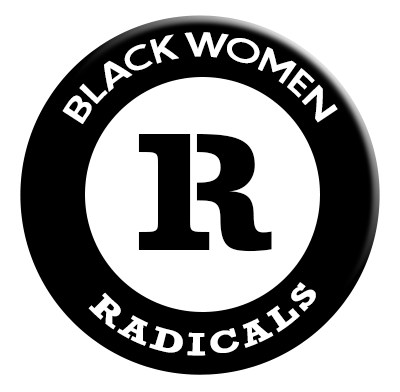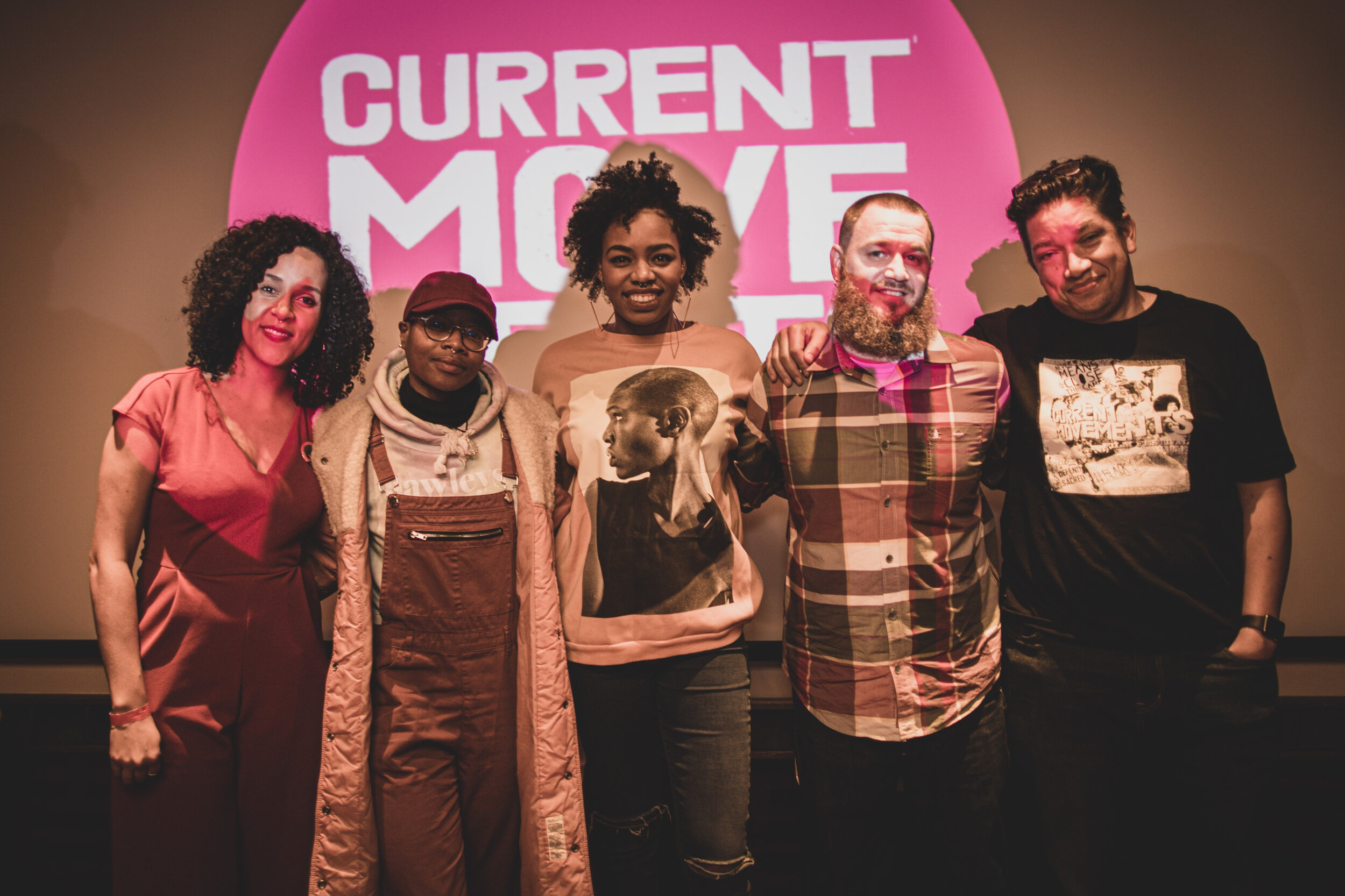How Activist and Storyteller Katie Petitt Is Creating Her Own Movement With Current Movements
Activist, storyteller, and writer, Katie Petitt. Photo courtesy of Katie Petitt.
By Jaimee A. Swift
Katie Petitt (she/her/hers) is doing the critical work of highlighting and spotlighting the leadership of activists around the world whose stories have often gone overlooked.
An activist, writer, and storyteller, Katie Petitt, 32, is working hard to ensure the stories and perspectives of activists and organizers––particularly Black and Brown organizers––in Washington, D.C. and beyond are overlooked no more. Hailing from Springbranch, Texas, Petitt is the founder and executive director of Current Movements, a non-profit based in D.C. “with a mission of connecting activists, organizations, and movements around the world using film, art, and technology.” Working at the intersections of film, art, technology, and social justice, Current Movements curates and creates compelling media and events by highlighting change agents and creatives in global radical movements and connects them with social justice movement building in the Washington, D.C. area.
Dedicated to uncovering the revolutionary leadership of those who have often been neglected in greater social movement and liberation struggles, Petitt is catalyzing a movement within a movement and will not stop until victory is won.
Petitt shared with me why she started Current Movements; on the critical importance of highlighting stories of activists from the D.C, Maryland, and Virgina areas; what a Black Woman Radical means to her; and who are Black women activists she admires.
Why did you start Current Movements? What are your hopes for the future of the organization?
Katie Petitt (KP): “I started Current Movements because I was in the international development field and I realized that a lot of the work I was doing for these organizations was recreating colonialism and the harmful processes of putting people from the West in front of people who are working in Africa, Latin America, and Asia. There are amazing grassroots organizations in those regions doing the work and they know the problems and they know the solutions more intimately than someone from rural Texas could ever know and understand. While I was in graduate school and even after it, I was in a fellowship that focused on storytelling. I tried to work with more progressive international development organizations but I got to the point where I was like, ‘Okay, this is just not the world for me.’ I decided to make my own business and focused on getting people’s stories out there and creating platforms for grassroots activism to be shared. As I was formulating what Current Movements could and should be to serve the liberation struggles and movements in the DMV and around the world, I started organizing and becoming active with activist organizations such as Black Lives Matter DC and Metro Black Lives and started an arts collective called Arts in Action.”
“I started Current Movements because I was in the international development field and I realized that a lot of the work I was doing for these organizations was recreating colonialism and the harmful processes of putting people from the West in front of people who are working in Africa, Latin America, and Asia.”
“About two years ago, we launched Current Movements and we did ten weeks of interviewing folks from around the world on several themes such as art, activism, and organizing. We asked folks what they wanted and what they needed. A lot of answers were they wanted more connection; they wanted to know what other groups around the world are doing; what is effective in creating change in the communities they were not connected with; and how they can build solidarity together. That is the idea of Current Movements. What we have been doing so far are monthly screenings where we screen current documentaries on social justice movements and we bring artists and activists to talk about how they are working on these issues and coming up with creative solutions here in the DMV. We also put on a six-day film festival with a similar framework and invited activists and artists around the world to get to know what they are doing. This allowed them to share with one another, know one another, and build solidarity with one another in that space. The space allowed them to tell their stories on the panel and one-on-one with people outside and around the event.”
“We also produced our first film on No Justice, No Pride, which is a trans organizing group in the D.C. area. The hope for our documentary film is to really get these stories out there and make them beautiful and sexy. We hope to do more films this year, too. We will also be doing events on intergenerational conversations with organizers and bringing in Black Panthers from D.C. and Black Lives Matter and Black Youth Project 100 DC (BYP100) abolitionists to talk about their activism and what they can learn from one another. I am also interested as to why there is not more intergenerational organizing happening in our region. I am just digging up that question and trying to build solidarity with different generations. We are also doing an arts show in Baltimore where we are looking at the solidarity movements with the Black Panthers and organizers and activists in Cuba, Latin America, Asia, and Africa and how they used art to show solidarity. We will be bridging the 1970s with today by bringing art collectives from the Global South to create pieces in solidarity with Baltimore organizers. We just want to be a tool for activists and artists to really get their stories out into the world.”
Katie Petitt with the Current Movements team. Photo courtesy of Katie Petitt.
Your work highlights a lot of activism in the DMV area, which oftentimes has been overlooked. Why is it important to you to highlight Black social movements in the DMV?
KT: “I think it is important because there are just a lot of people who just don't know about them. The way our educational system, media, and the way our access to information works, it keeps the revolutionary and the different solutions-based information away from the vast majority of us––unless we are looking for it and know what to look for. It is really hard for the larger population to get a hold of this information and I think that is by design, right? The more we are able to tell our stories, especially as Black Radicals, the more it inspires hope and a larger capacity to imagine beyond the status quo and the current system we live in. I just want to mention that this weekend was the Women’s March and it is great to get women’s stories out there. However, I think it is essential we highlight Black and local issues and I think if we are not telling those stories, we are not really doing the larger movement for liberation any justice because those who are the most marginalized, they are the ones that need to be telling their stories so actual change can happen. If we are just telling the stories of white environmental activists or whatever it is, we cannot be only telling their stories because their understanding of the world is very limited as in comparison to others who are facing the greatest amount of oppression.”
“The more we are able to tell our stories, especially as Black Radicals, the more it inspires hope and a larger capacity to imagine beyond the status quo and the current system we live in.”
“In the DMV, there is incredible and beautiful organizing that has happened from the beginning. That is another aspect we will be digging this year with Current Movements about those stories. There is an article that came out a couple years ago about two White women with the Women’s March who were discussing how they used to work in international development, had kids, and left their jobs, and wanted to get involved in activism but looked around and said there was no organizing happening [Laughs]. There was a lot of commotion about that because it is not true and it has never been true. There has been a lot of work done and it has been done mostly by Black folks. Bread for the City did an exhibition at the Anacostia Museum and did a really good job of highlighting that work. We are working in partnership with them this year to honor more D.C. organizing history. When we remember these stories, we can build on top of what elders have built already and we don’t have to recreate the wheel. We can call our elders up if they are still living and say, ‘Well, you addressed these issues in the sixties and seventies, so how can we take from what you did and apply it to the issues we are facing now?”
What does a Black Woman Radical mean to you?
KT: “I think what is magical about Black women is we are connected to ourselves, our community, and our history, present, and future in a way that is unique. It comes out of our struggle and our oppression but is an attribute that is really powerful when it is combined with organizing and activism. In some ways, I think it is hard to imagine being a Black woman and not being radical. I think it is hard to live this experience and be in this body and not understand the personal is political and the political is personal. When people choose to take action with that knowledge and that lived experience, it is sheer fire when it comes to activism. Organizing with Black Lives Matter DC and being around Black women and femmes, I am just blown away by them constantly. You mentioned April Goggans and Nee Nee Taylor and the amount of tenacity, grit, and compassion––they are just tireless in their efforts for justice and a better future for our people. I am so inspired by Black women all the time. I think if the larger Left movement really starts listening to Black and Indigenous women and put them at the forefront, so much amazing stuff could happen because we would see and understand in such a clear way.”
“I think what is magical about Black women is we are connected to ourselves, our community, and our history, present, and future in a way that is unique. It comes out of our struggle and oppression but is an attribute that is really powerful when it is combined with organizing and activism.”
Who are Black women you admire?
KT: “I really admire Nee Nee and April. I also admire Makia Green and all of the folks who have come through Black Lives Matter DC and women in No Justice, No Pride. The women and femmes of Black Youth Project 100––it is really just the folks who are moving and shaking right now in D.C. In every era, I think it is hard to be a radical and an activist and deal with the amount of compounded struggle. The desire of these activists to still get out there in the streets, courtrooms, hospitals, and all these different places day after day when they could be at some cushion job, at home with their families, and watching TV but they are not doing that. They are really fighting for our community and for all of us. I think that is why these stories are so important because we are taught today we should just resign, take the easy road, and go home. But to see these people in action and to see they are really doing it––that is what is going to change the world.”
You can visit the Current Movements website here.
Follow Current Movements on Instagram and Twitter.


